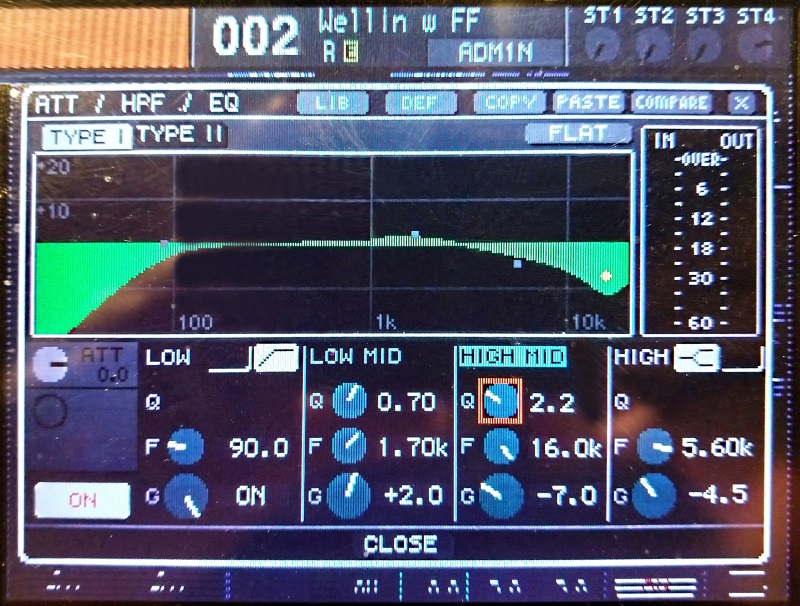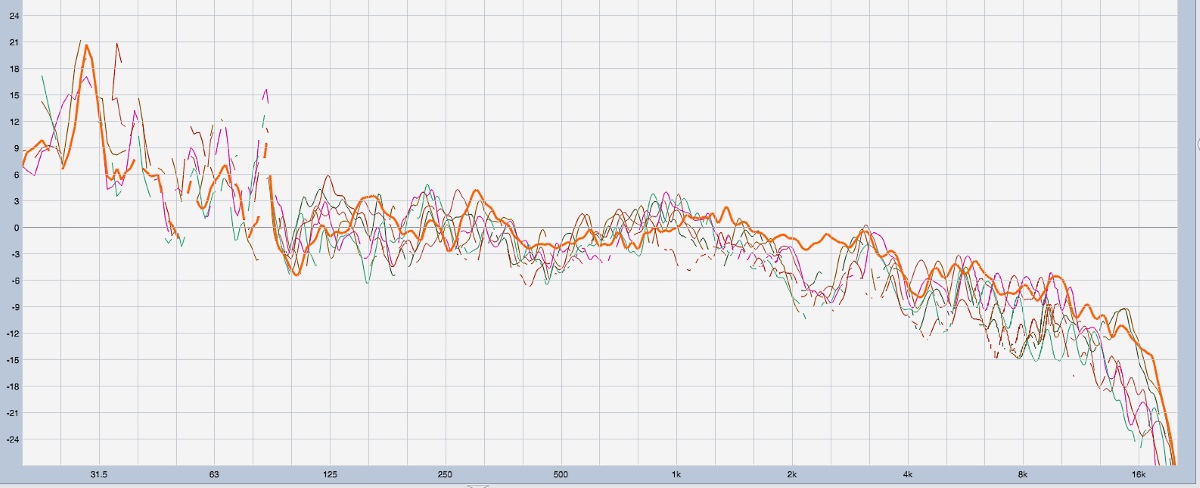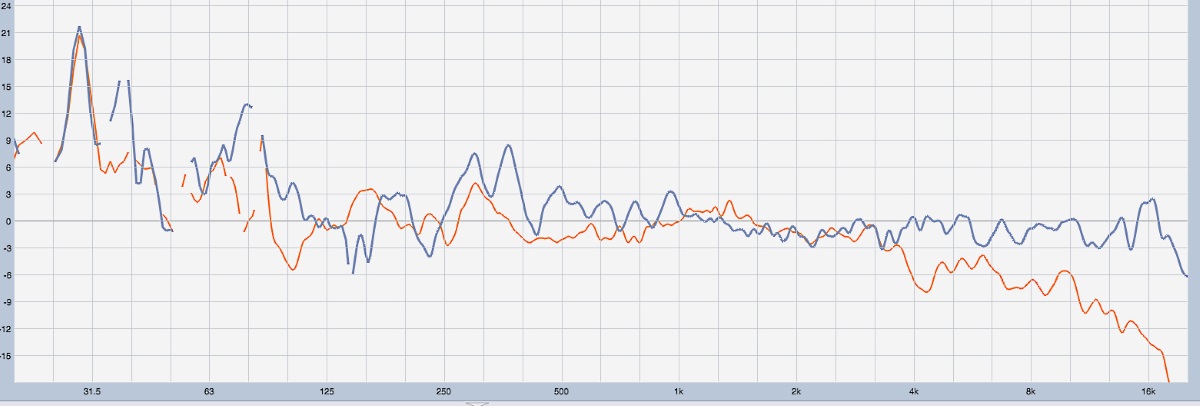
By Analyzer
After a break, I returned to the venue, fired up (Rational Acoustics) Smaart, and went through the same process again, this time incorporating the analyzer data into my decisions.
Coverage Gap: I started by taking four data traces in the middle of the main coverage area and averaging those responses. This gives a good representation of the mains are doing in the space and serves as a target curve for the front fill response (Figure 2, orange trace).

The relatively flat curve of this system (with the subwoofer muted) reveals its primary purpose as a speech reinforcement system. By taking measurements while moving across the seating rows, I was able to see exactly where the HF response of the mains fell off and define the necessary coverage area of the fill (Figure 3).

Placement and Aim: Although the fill needed to cover one row deeper than I initially thought, the placement couldn’t be changed, and the aim was still towards the center of the section. No change.
EQ: My ears told me the fill loudspeakers had excessive HF. To check this, I disabled the matrix EQ and measured their “raw” response from the middle of the fill coverage area (Figure 4).

My “by ear” level matching turned out to be right on the money, and the loudspeaker did in fact have HF response exceeding the mains. I left the gain setting alone and brought the EQ back in. In addition to the -4.5 dB HF shelf I had dialed in by ear, I added an additional cut at 16 kHz and a slight (2 dB) boost around 1.7 kHz, ending up with a close match to the target curve (Figure 5).

If another PEQ band had been available, I would have reduced the response bump around 350 Hz, but common sense told me to prioritize the response above 1 kHz, which is where the front fills really serve their purpose (Figure 6).

Level: The by-ear setting came within a dB of a perfect match. No change.
Delay: This is where it gets a little tricky. Front fill delay should be set at the point where the fill coverage meets the mains coverage at equal level, as that’s where the most interaction will occur. This turned out to be the middle of the fourth row, where Smaart’s delay tracker told me I’d come within 3.3 ms of the correct value. I had actually over-delayed, which makes sense: some system techs intentionally over-delay fills in an effort to improve imaging, because it can sound more natural.
There are multiple schools of thought on this, but I dialed it back to perfectly sync the arrival times in the interest of studying the phase alignment. Unfortunately, Figure 7 reveals a phase incompatibility, which is not unexpected between the on-axis point of one manufacturer’s two-way point source loudspeaker and the off-axis edge of another manufacturer’s line array.

With the responses so far off, any fancy alignment tricks wouldn’t hold for more than a single seat, so I’d call that “as good as it gets.” Walking the coverage area to reference music confirmed a smooth coverage handoff from main to fill, with no weird imaging or level jumps.
The Way Forward
I wish to make abundantly clear that this isn’t a case of “human judgement versus analyzer.” That the old-school, by-ear workflow got me within 1 dB and 3 ms of the modern method just proves that judgement and experience can be extremely effective, and that we should trust our abilities to make improvements without an analyzer.
The analyzer simply brings more information to the table, allowing us to make better judgements. Human judgement will always be part of the equation, because the analyzer only knows how to answer certain questions. For example, despite having obtained a perfect level match, I ended up turning down the fill by 2 dB because the placement was very close to a few seats in the front row. The optimization is only “optimal” as long as it’s serving the needs of the production, and when a patron in the front row complains, I’m not going to respond by saying “that’s what the analyzer told me to do.”
The analyzer is also a means of “closing the loop” – seeing the excess HF response assured me that I can be a little more liberal with the EQ in the future, and not be so scared of turning that knob if that’s what my ear is telling me to do. In this sense, the analyzer is an important training tool that can help us be even more effective when we’re not using it.
